A colourful history: Roaming Romans, the Moors & more16th July 2019
So let us embark this Ibizarre journey at the fons et origo: to say it in the words of the poet Dylan Thomas “To begin, at the beginning.” For in order to truly, deeply understand the spirit, soul & even boho style of the island of Ibiza, it is essential to first get familiar with what lays at the root of its irresistible appeal, at the heart of its magic, the core of its ceaseless chill & effortless style.
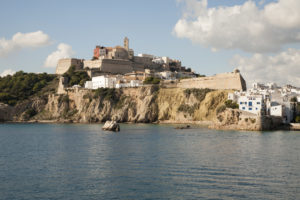
For as much as Eivissa nowadays seems to be the place to be for basically every type of tourist ór person, ranging from crazy clubbers to happy hippies, naive nature-lovers (like myself) to private-jetting v.i.p.’s, regardless their “where, when or why,” it is not for the first time in history this island is being swarmed by guiris. Let’s just say that a lack of attention was never really an issue for this beauteous Balear.
Au Contraire!
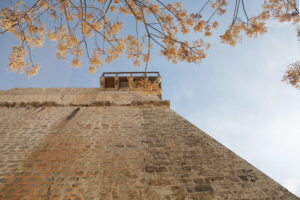
Its strategic location in the Mediterranean Sea – equidistant between the Iberian Peninsula & North Africa – has made little Ibiza a big target for copious conquerors since centuries. Forerunners were the Phoenicians, a people of successful seafarers & traders, who supposedly discovered the island in the eighth century BC. Proof of that is found in the remnants of the Sa Caleta settlement in San Jose, nowadays UNESCO World Heritage.
After about seven centuries on the southeast coast, the Phoenicians moved to the exact spot where Dalt Vila (- UNESCO World Heritage as well -) is located still today. They suitably baptised their city Ibossim, “city of Bes“, after the Egyptian god who is not just responsible for fighting off evil but simultaneously the symbol of all good things in life; music, dance, sexual pleasure, et cetera.
Just in case Bes could not master all that many virtues by himself, the Phoenicians introduced Tanit, goddess of dance, fertility, creation as well as destruction. She has been a key deity & the patron saint of Ibiza ever since, therefore her name & appearance will pop up plentifully, both in this blog & around the island.
A final Phoenician souvenir is Puig des Molins, the hill just west of the Old Town, that can be recognised by & is named after the flour mills crowning its top (since the 15th century.) The hill allegedly harbours the world’s largest, best-preserved necropolis; the Phoenicians fiercely founded the “city of the death” just next to their “city of the living!”
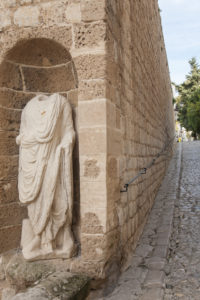
After the forceful Phoenicians came the commercial Carthaginians from Carthage, a flourishing Phoenician colony. Under their domination, Ibiza grew into a salient trading post in the Mediterranean with as its main export product the “white gold”: salt.
When subsequently the Carthaginians went to war with the roaming Romans – always ambitiously expanding their empire – Ibiza was forced to make a pact with the latter in order to save itself from destruction. To Rome the island’s principal point of attraction were the superabundant salt flats, for the purpose of pickling the food supplies crucial on their ships & conquests.
Next in line were the Goths and Visigoths who, from the fifth to ninth century, were on the prowl throughout Europe. Thereafter the island of Ibiza was conquered successively by Vandals & Byzantines.
Eivissa, like the rest of Spain, did not escape the invasion of the Moors in the eighth century. “Yebisah” totally transformed under the reign of the multifaceted Muslims in the 500 years they were in power. Not only did the inventive invaders induce an expansive, economic growth based on salt, agriculture & fishing – inter alia, they introduced crop irrigation systems – also in terms of architecture, interior & art they undeniably made their mark.
The Arab influence remains omnipresent in contemporary Ibicenco style & in my humble opinion even lays at the base of the o-so-popular Bohemian Chic, seemingly the (unspoken)(outspoken) island dress code. A final fun fact: some actually accredit the substratum of Spanish flamenco to these creative conquerers!
The Moorish occupation lasted until the historic date of August 8, 1235, when Ibiza was conquered by the Catalans in the name of Christianity. They broke down the Islamic mosque & built the current Catedral de Nuestra Señora de las Nieves, the principal church of Dalt Vila, on its foundations. Since then, the island has been both Catholic & Catalan.
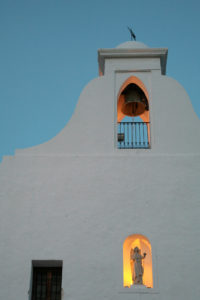
In the coming centuries, all villages on the island are given a Christian name & a central church. Due to the abiding attacks by pirates & looters, these “houses of God” get equipped with fortified walls & occasionally a couple of cannons on the roof. The extensive intensification of defence back then makes that magnificent monuments like the fortress of Dalt Vila & the many majestic watchtowers encircling the island, are exceptionally intact at present.
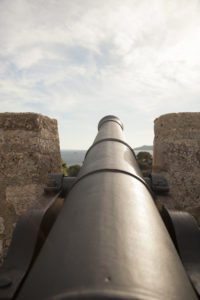
After slightly sinking into oblivion in the early twentieth century, the island got rediscovered in the swinging sixties by the so-called hippies searching for “A better world.” Back then Ibiza was a favoured free port on the outskirts of Franco’s totalitarian Spain. Due to its distinctive, natural beauty & a prevailing feeling of freedom, Ibiza island soon is a sought after sanctuary for free spirits, bohemians, artists, rare birds, lone wolfs & other outsiders.
The seventies arrive on the island hand in hand with mass tourism, by courtesy of a better economy, more leisure time, better transport & the inception of the cost-effective concept of package travel. In the 1980’s the prodigious popularity of the “Balearic beats” – the distinctive dance music from Ibiza – reels in a crush of clubbers on top of that. To date, clubs such as Pacha, Space, Privilege, Amnesia & many more keep the dance tourism & vibrant nightlife alive, leaving the pure pulchritude of the wild White Isle somewhat in a haze.
Anyhoo. To make a long story short, or rather less long, the motley crew of invaders Eivissa experienced throughout the ages is undoubtedly at the basis of the current culture & unbuttoned atmosphere on the island. One of the real reasons why the island remains an elite travel destination & attracts people of all plumage, surely is the truly tolerant attitude of the locals. Coping with other cultures is blatantly in their blood & the tottering tourists are a piece of cake in comparison to the audacious occupiers from the past. All’s well that ends well








